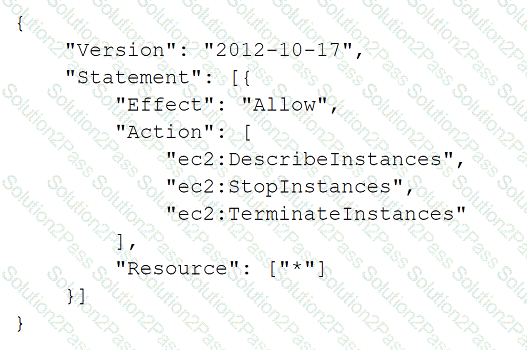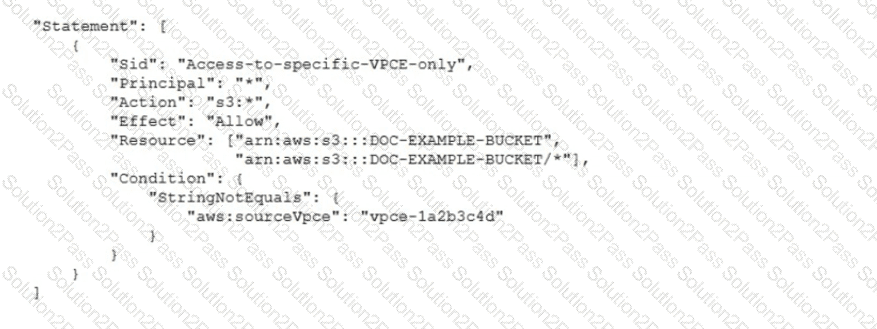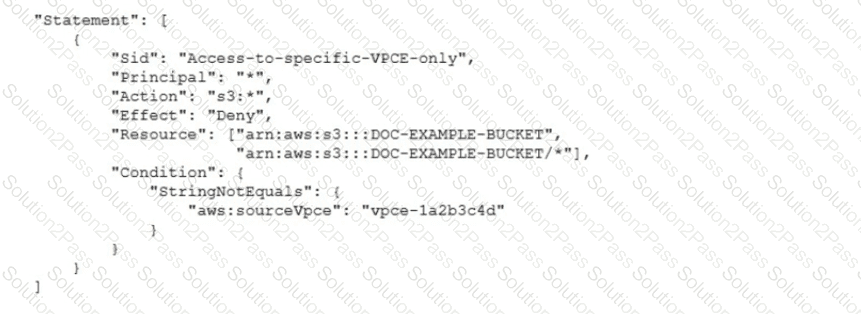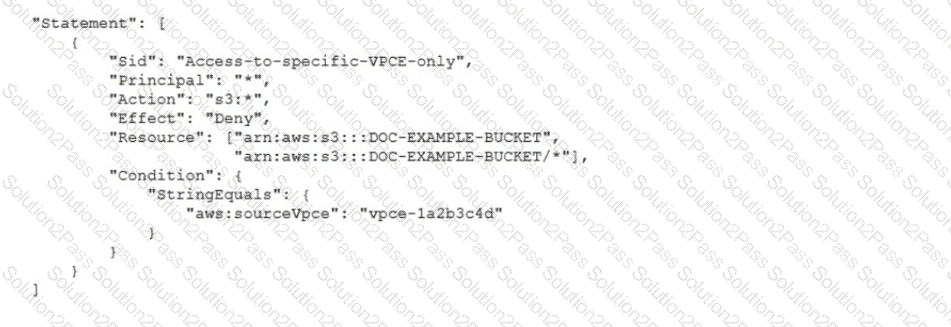SCS-C02 Amazon Web Services AWS Certified Security - Specialty Free Practice Exam Questions (2025 Updated)
Prepare effectively for your Amazon Web Services SCS-C02 AWS Certified Security - Specialty certification with our extensive collection of free, high-quality practice questions. Each question is designed to mirror the actual exam format and objectives, complete with comprehensive answers and detailed explanations. Our materials are regularly updated for 2025, ensuring you have the most current resources to build confidence and succeed on your first attempt.
A security engineer wants to evaluate configuration changes to a specific AWS resource to ensure that the resource meets compliance standards. However, the security engineer is concerned about a situation in which several configuration changes are made to the resource in quick succession. The security engineer wants to record only the latest configuration of that resource to indicate the cumulative impact of the set of changes.
Which solution will meet this requirement in the MOST operationally efficient way?
A company is using IAM Organizations to develop a multi-account secure networking strategy. The company plans to use separate centrally managed accounts for shared services, auditing, and security inspection. The company plans to provide dozens of additional accounts to application owners for production and development environments.
Company security policy requires that all internet traffic be routed through a centrally managed security inspection layer in the security inspection account. A security engineer must recommend a solution that minimizes administrative overhead and complexity.
Which solution meets these requirements?
A company finds that one of its Amazon EC2 instances suddenly has a high CPU usage. The company does not know whether the EC2 instance is compromised or whether the operating system is performing background cleanup.
Which combination of steps should a security engineer take before investigating the issue? (Select THREE.)
A company wants to monitor the deletion of AWS Key Management Service (AWS KMS) customer managed keys. A security engineer needs to create an alarm that will notify the company before a KMS key is deleted. The security engineer has configured the integration of AWS CloudTrail with Amazon CloudWatch.
What should the security engineer do next to meet these requirements?
A Development team has built an experimental environment to test a simple stale web application It has built an isolated VPC with a private and a public subnet. The public subnet holds only an Application Load Balancer a NAT gateway, and an internet gateway. The private subnet holds ail of the Amazon EC2 instances
There are 3 different types of servers Each server type has its own Security Group that limits access lo only required connectivity. The Security Groups nave both inbound and outbound rules applied Each subnet has both inbound and outbound network ACls applied to limit access to only required connectivity
Which of the following should the team check if a server cannot establish an outbound connection to the internet? (Select THREE.)
A security engineer is implementing a solution to allow users to seamlessly encrypt Amazon S3 objects without having to touch the keys directly. The solution must be highlyscalable without requiring continual management. Additionally, the organization must be able to immediately delete the encryption keys.
Which solution meets these requirements?
A security engineer needs to build a solution to turn IAM CloudTrail back on in multiple IAM Regions in case it is ever turned off.
What is the MOST efficient way to implement this solution?
A security engineer is designing an IAM policy to protect AWS API operations. The policy must enforce multi-factor authentication (MFA) for IAM users to access certain services in the AWS production account. Each session must remain valid for only 2 hours. The current version of the IAM policy is as follows:

Which combination of conditions must the security engineer add to the IAM policy to meet these requirements? (Select TWO.)
Your company uses IAM to host its resources. They have the following requirements
1) Record all API calls and Transitions
2) Help in understanding what resources are there in the account
3) Facility to allow auditing credentials and logins Which services would suffice the above requirements
Please select:
A security engineer needs to suppress AWS. Security Hub findings automatically for resources that have a specific tag attached.
Which solution will meet this requirement?
A security engineer discovers that a company's user passwords have no required minimum length. The company is using the following two identity providers (IdPs):
• AWS Identity and Access Management (1AM) federated with on-premises Active Directory
• Amazon Cognito user pools that contain the user database for an AWS Cloud application that the company developed
Which combination of actions should the security engineer take to implement a required minimum length for the passwords? (Select TWO.)
A company created an IAM account for its developers to use for testing and learning purposes Because MM account will be shared among multiple teams of developers, the company wants to restrict the ability to stop and terminate Amazon EC2 instances so that a team can perform these actions only on the instances it owns.
Developers were Instructed to tag al their instances with a Team tag key and use the team name in the tag value One of the first teams to use this account is Business Intelligence A security engineer needs to develop a highly scalable solution for providing developers with access to the appropriate resources within the account The security engineer has already created individual IAM roles for each team.
Which additional configuration steps should the security engineer take to complete the task?
A security team is working on a solution that will use Amazon EventBridge (Amazon CloudWatch Events) to monitor new Amazon S3 objects. The solution will monitor for public access and for changes to any S3 bucket policy or setting that result in public access. The security team configures EventBridge to watch for specific API calls that are logged from AWS CloudTrail. EventBridge has an action to send an email notification through Amazon Simple Notification Service (Amazon SNS) to the security team immediately with details of the API call.
Specifically, the security team wants EventBridge to watch for the s3:PutObjectAcl, s3:DeleteBucketPolicy, and s3:PutBucketPolicy API invocation logs from CloudTrail. While developing the solution in a single account, the security team discovers that the s3:PutObjectAcl API call does not invoke an EventBridge event. However, the s3:DeleteBucketPolicy API call and the s3:PutBucketPolicy API call do invoke an event.
The security team has enabled CloudTrail for AWS management events with a basic configuration in the AWS Region in which EventBridge is being tested. Verification of the EventBridge event pattern indicates that the pattern is set up correctly. The security team must implement a solution so that the s3:PutObjectAcl API call will invoke an EventBridge event. The solution must not generate false notifications.
Which solution will meet these requirements?
A security engineer needs to configure an Amazon S3 bucket policy to restrict access to an S3 bucket that is named DOC-EXAMPLE-BUCKET. The policy must allow access to only DOC-EXAMPLE-BUCKET from only the following endpoint vpce-1a2b3c4d. The policy must deny all access to DOC-EXAMPLE-BUCKET if the specified endpomt is not used.
Which bucket policy statement meets these requirements?
A company hosts an application on Amazon EC2 instances. The application also uses Amazon S3 and Amazon Simple Queue Service (Amazon SQS). The application is behind an Application Load Balancer (ALB) and scales with AWS Auto Scaling.
The company’s security policy requires the use of least privilege access, which has been applied to all existing AWS resources. A security engineer needs to implement private connectivity to AWS services.
Which combination of steps should the security engineer take to meet this requirement? (Select THREE.)
A company needs to log object-level activity in its Amazon S3 buckets. The company also needs to validate the integrity of the log file by using a digital signature.
A company's network security policy requires encryption for all data in transit. The company must encrypt data that is sent between Amazon EC2 instances and Amazon Elastic Block Store (Amazon EBS) volumes.
A company is running its workloads in a single AWS Region and uses AWS Organizations. A security engineer must implement a solution to prevent users from launching resources in other Regions.
Which solution will meet these requirements with the LEAST operational overhead?
A company wants to remove all SSH keys permanently from a specific subset of its Amazon Linux 2 Amazon EC2 instances that are using the same 1AM instance profile However three individuals who have IAM user accounts will need to access these instances by using an SSH session to perform critical duties
How can a security engineer provide the access to meet these requirements'?
A company is hosting a web application on Amazon EC2 instances behind an Application Load Balancer (ALB). The application has become the target of a DoS attack. Application logging shows that requests are coming from small number of client IP addresses, but the addresses change regularly.
The company needs to block the malicious traffic with a solution that requires the least amount of ongoing effort.
Which solution meets these requirements?




